The term ‘suburban gothic’ is a somewhat nebulous one, sharing a clear heritage with the more well-defined American or Southern gothic genres (themselves descended from a classical European gothic tradition that dates back as far as the 1760s). In literary terms, the American gothic genre is considered to have begun with the novel Wieland, written in 1798 by Charles Brockden Brown. Subsequently, throughout the 1800s, gothic writing in the U.S. began to flourish, encompassing authors such as Washington Irving, Edgar Allan Poe and Nathaniel Hawthorne. The growth of the continental United States allowed American gothic literature to find influence outside a New England setting; in particular, an entire subgenre took hold in the South following the Civil War and the collapse of the Confederacy. In these works, the hallmarks of the gothic genre – dark corridors, decaying architecture, acts of murder and madness – move away from English castles and monasteries and fall upon colonial manors and southern plantation houses.
Jumping forward a hundred years or so, the great American frontier looks much different. Following World War II, the United States experienced an economic boom which, combined with a massive population spike, catalyzed a drive for cost-effective, mass-produced housing. This vision was realized to great effect by real estate developer William Levitt, whose company designed and built Levittown, the model for the modern suburban community. These cookie-cutter, white-picket-fenced homes became the image of the American Dream for millions of Americans – though crucially, not all Americans; a major driving factor in the mass exodus of white families from major cities was the Civil Rights Movement and increased integration of black Americans, who were often not allowed to purchase property in suburban communities. Middle-class America had been transformed by a million million houses that all looked the same, plastering a new picture of prosperity and wealth over a dark, teeming undercurrent of racism and postwar trauma.
Author Bernice M. Murphy attributes the origins of the suburban gothic genre primarily to Shirley Jackson, most well known as the author of The Haunting of Hill House (1959), and Richard Matheson, whose works include I Am Legend (1954) and The Shrinking Man (1956). These authors were among the first to interrogate the idea that the dark and terrible deeds of gothic fiction could happen in your neighborhood, not just in an ancient haunted castle. But it wasn’t until the 70s and 80s that a visual language for the suburban gothic began to emerge. John Carpenter’s iconic 1978 slasher flick, Halloween, planted the idea that a serial killer like Michael Myers could strike anywhere, even an unassuming town like Haddonfield, Illinois. Halloween spawned a slasher movie craze over the next few decades, including franchises like A Nightmare on Elm Street (films which also feature a notably suburban setting), subverting the idealized image of suburban security and comfort that had dominated since the 50s.
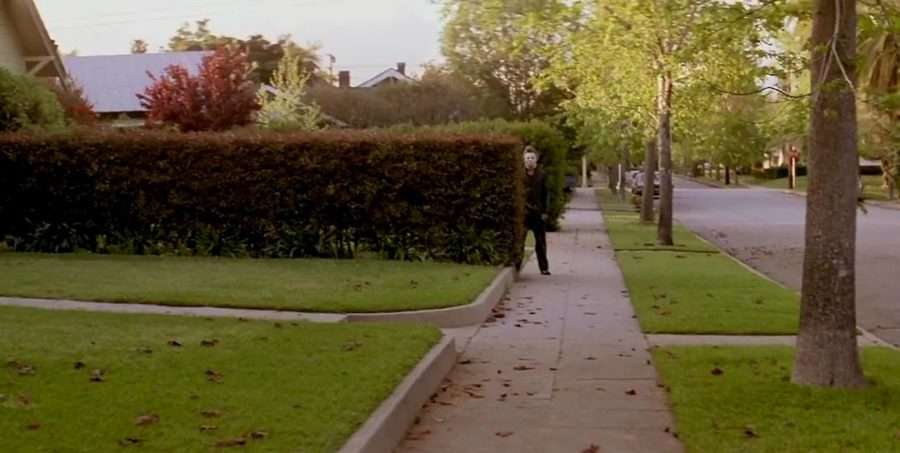
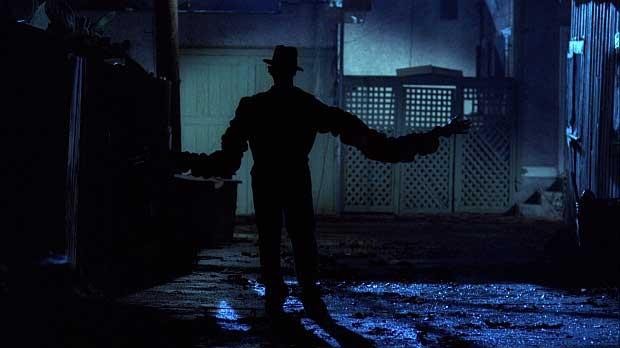
But there is one artist whose work has had perhaps the most enduring influence on the suburban gothic aesthetic: surrealist filmmaker David Lynch, who is famous for exploring contemporary Americana through a visually bizarre lens. In the opening scene of his 1986 film, Blue Velvet, Lynch juxtaposes the archetypal suburban imagery with a mounting sense of unease, eventually zooming in on a well-manicured lawn to show the writhing insects hidden underneath. Four years later, Lynch would co-create the series Twin Peaks with writer Mark Frost, in which FBI agent Dale Cooper unearths both criminal and supernatural evils lurking under the titular idyllic town of Twin Peaks. The small-town imagery and atmosphere of Twin Peaks has become uniquely recognizable in popular culture, and could probably be said to have spawned an entire genre unto itself: shows like Gravity Falls and Stranger Things and even video games like Alan Wake have cited it as major influences.
(3) Opening scene of Blue Velvet (1986), dir. David Lynch

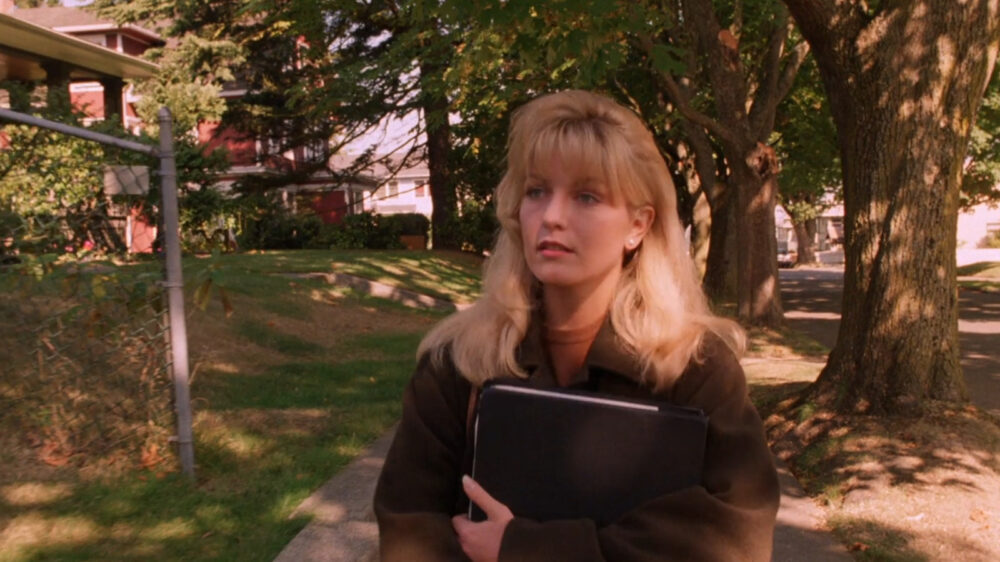
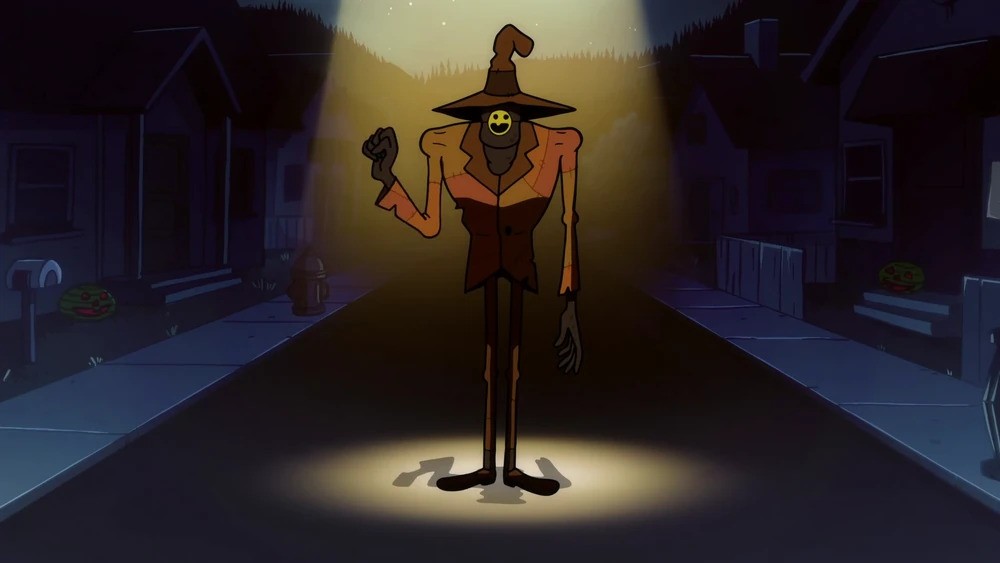
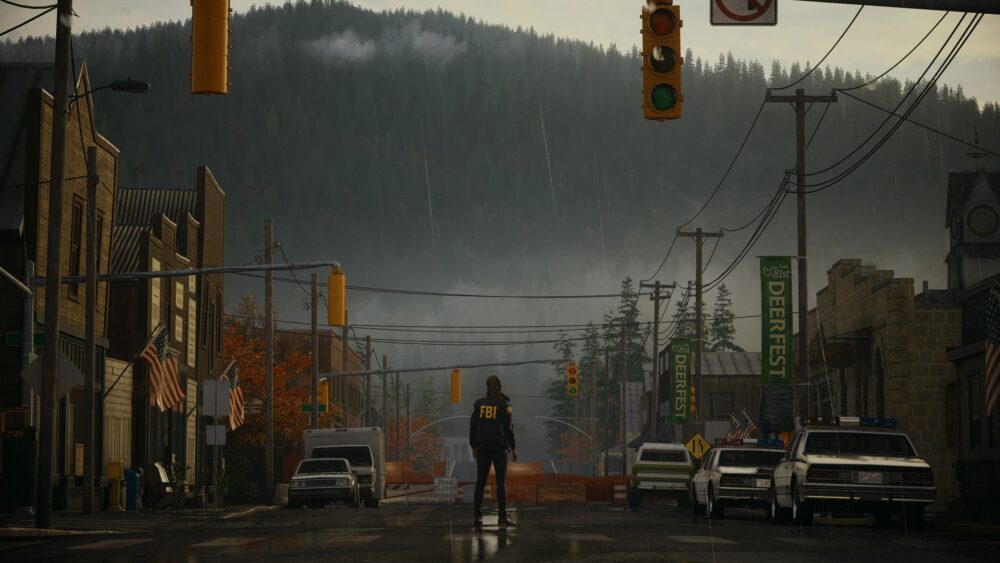
In a purely aesthetic sense, suburban gothic imagery dwells on desolate suburban environments, often photographed at night with an emphasis on solitary lit windows or street lamps. In some cases, the focus is on the ‘decay’ of suburbia: images of abandoned homes or run down businesses, spaces overrun with graffiti or foliage. In other cases, the discomfort can come from the inherent uncanniness of pristine suburban spaces, especially the disorienting nature of endlessly repeating ‘cookie-cutter’ neighborhoods. In this sense, the aesthetic shares some characteristics with the current ‘liminal space’ boom, which portrays empty transitional spaces to surreal effect. Sometimes, suburban gothic imagery can veer into outright supernatural horror, as in the art of Trevor Henderson.
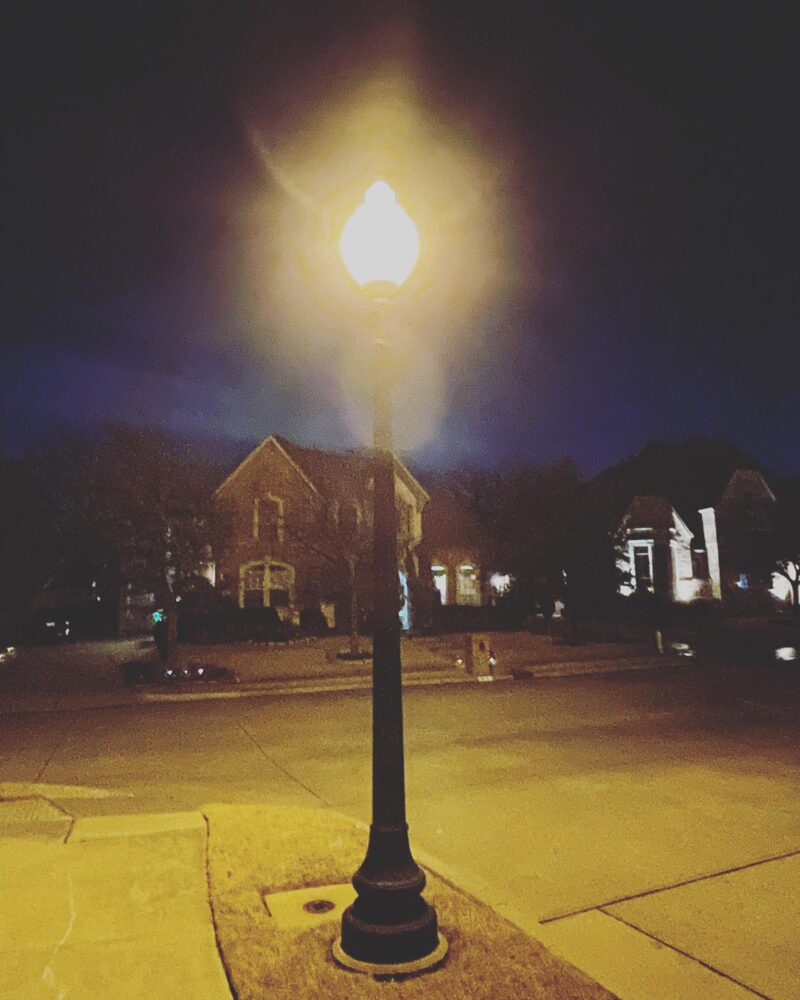
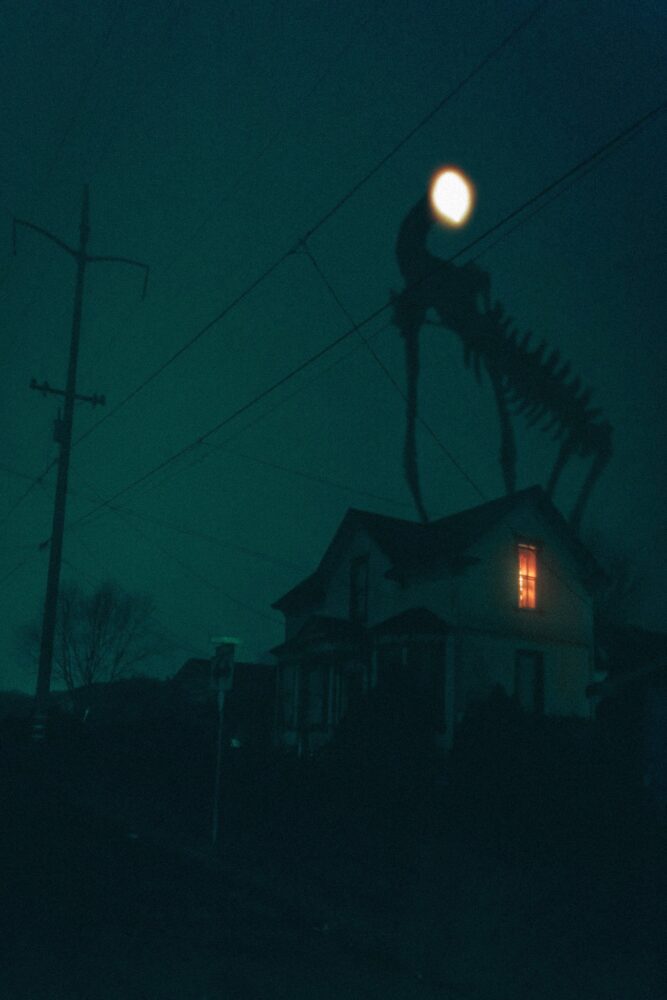
Resources
- Halloween (1978), dir. John Carpenter. https://theofficialjohncarpenter.com/halloween/
- A Nightmare on Elm Street (1984), dir. Wes Craven. https://www.wescraven.com/film/a-nightmare-on-elm-street/
- Blue Velvet (1986), dir. David Lynch. https://www.criterion.com/films/29144-blue-velvet
- “Coma.” Twin Peaks (1990), season 2 episode 2, dir. David Lynch, written by Harley Peyton. Created by David Lynch and Mark Frost. https://www.paramountplus.com/shows/twin_peaks/episodes/
- “Streetlights” photographed by u/VBS_Official, 2022. https://www.reddit.com/r/Suburban_Gothic_Art/comments/t8tzsz/streetlights_oc/
- “Roving moon on a humid summer night.” Art by Trevor Henderson, photography by Briscoe Park, 2021. https://twitter.com/slimyswampghost/status/1424128102872100868
- “The Rise of Gothic Fiction in England & the United States.” Tufts University Libraries, 2023. https://researchguides.library.tufts.edu/c.php?g=824030&p=5883640
- “The Affluent Society: The Rise of the Suburbs.” The American Yawp, edited by Joseph L. Locke and Ben Wright, Stanford University Press, 2019. https://www.americanyawp.com/text/26-the-affluent-society/#II_The_Rise_of_the_Suburbs
- The Suburban Gothic in American Popular Culture. Bernice M. Murphy, 2009. https://www.amazon.com/Suburban-Gothic-American-Popular-Culture/dp/0230218105
- Twin Peaks: Fire Walk With Me (1992), dir. David Lynch. https://www.criterion.com/films/29237-twin-peaks-fire-walk-with-me
- “Summerween.” Gravity Falls (2012), season 1 episode 12, dir. John Aoshima, written by Zach Paez, Alex Hirsch, and Michael Rianda. Created by Alex Hirsch. https://www.disneyplus.com/series/gravity-falls/HZxayxzMJqed
- Alan Wake II (2023). Remedy Entertainment, Epic Games Publishing. https://www.alanwake.com/

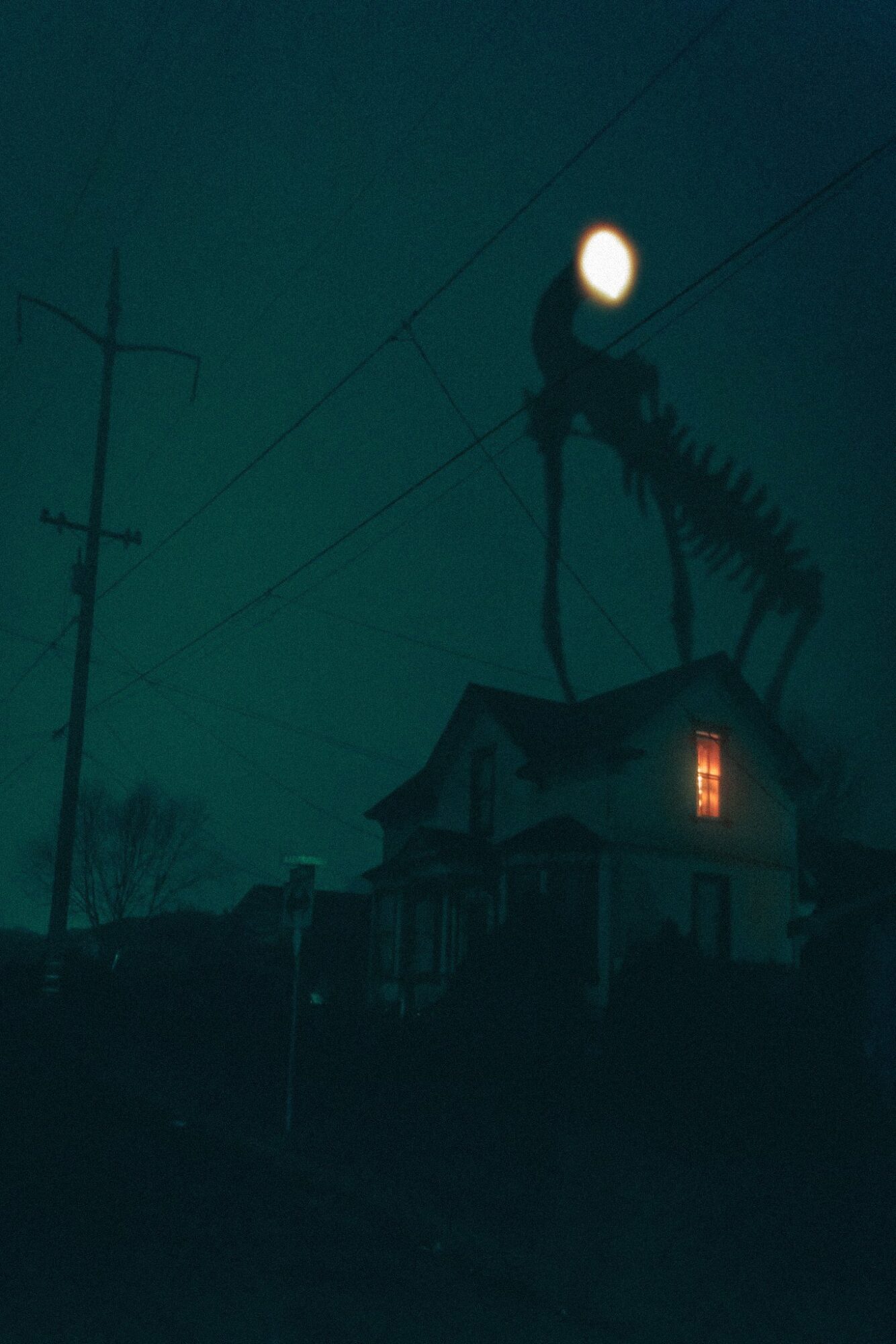
2 Comments. Leave new
Wonderful post! I really appreciated you going into detail on the history of both suburbia and the often-misunderstood gothicism; it helps the reader to notice the fundamental juxtaposition of horror in a place so sterile and comfortable as the suburbs. I would love to see some examples of Twin Peaks and its successors – it sounds like it was very important to the aesthetic.
Lavender, thanks for your reply! I’m glad you got something out of the historical context section; I think the research for that was the most involved part of this post, and it gave me a better understanding of the aesthetic itself than I had going in. I’ll try and include some more visual examples from Twin Peaks and its successors. Thanks again!